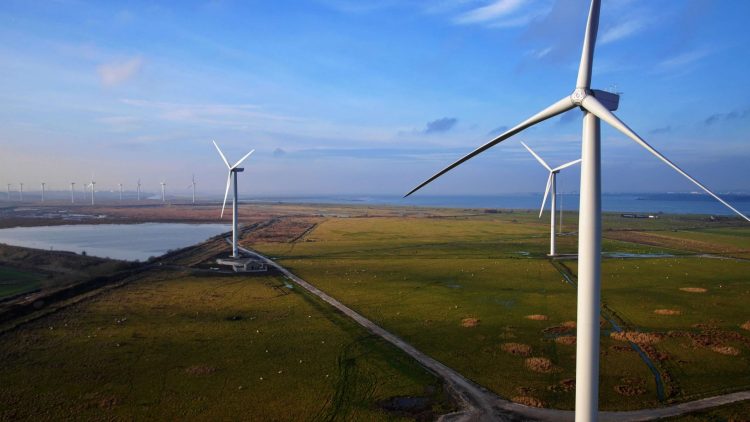Onshore wind farm close to the Mersey estuary will kick off push to generate game-changing ‘green hydrogen’. Tony McDonough reports

Frodsham Wind Farm close to the Mersey Estuary is to be utilised to generate emissions-free hydrogen to supply energy to factories and homes.
As part of the multi-billion pound HyNet hydrogen project, Progressive Energy, Statkraft and Foresight will collaborate on a project to generate hydrogen using the wind farm which has a capacity of 50MW.
Hydrogen forms a central plank of the UK Government’s push towards decarbonisation and net zero. However, how the hydrogen is produced will be critical to how much carbon will be saved.
HyNet’s main focus is on what is called ‘blue hydrogen’. This will be produced by the burning of natural gas at a facility built at the Essar Oil UK refinery in Ellesmere Port. The carbon emissions from the gas will then be captured and stored in large caverns in the rock under Liverpool Bay.
This method is seen as controversial by many experts. They point out carbon capture and storage has never been successful so far on this scale and may end up not saving that much carbon.
A better long-term option is ‘green hydrogen’. This is produced by running electricity from renewable sources such as wind and solar through what is called an electrolyser. This converts the electricity into ‘clean’ hydrogen.
Special report: How critical is hydrogen to net zero?
However, in an interview with LBN in September David Parkin of Progressive Energy, the project director for HyNet, said there was simply not enough current renewables capacity available in the UK to produce green hydrogen viably and at scale.
“There are two reasons why we start HyNet with blue hydrogen rather than green,” said David. “One is the price point and the other is the scale and availability of renewable electricity for green hydrogen.
“We have identified demand for 4GW of hydrogen in the HyNet region. So if you are going to supply that from electricity you would need about 6GW.
“If you get that from offshore wind, which operates on about a 50% load factor, then you will need a 12GW wind farm. As of today, there is a total of 12GW of offshore wind capacity in the UK.”
Under the collaboration agreement between Progressive Energy, Statkraft, a Norwegian renewables business, and Foresight, which operates the Frodsham Wind Farm, will look to initially set up a 28MW Cheshire Green Hydrogen project.
This will supply energy to container glass manufacturer Encirc as well as to 2,000 homes in the proposed ‘hydrogen village” in Whitby in Ellesmere Port, being pioneered by gas giant Cadent.

However, this project to heat homes using hydrogen has also come in for much criticism. Even David Parkin admits the argument for using hydrogen for home heating is not a strong one.
He explained: “People will say heat pumps are more efficient than hydrogen and it is hard to argue with the basic physics of that.
“One unit of electricity from an offshore wind farm into a heat pump you can get three units of heat. If you get that same unit into an electrolyser and put the hydrogen into a pipe and burn it in a boiler, you might get half a unit of heat.”
So, while HyNet is collaborating on the hydrogen village, its primary focus is to supply hydrogen for industrial use. This initial phase of green hydrogen projects will aim to total 100MW and reduce carbon dioxide emissions from industry by up to 180,000 tonnes.
READ MORE: Essar Oil UK signs 280MW hydrogen deal
Industrial customers for this green hydrogen include the Pilkington glass factory in St Helens and Kellogg’s in Greater Manchester.
HyNet plans to have its hydrogen network, producing blue and green hydrogen, in operation by late 2025. Adam Baddeley, head of industrial hydrogen at Progressive Energy, added: “The North West is an ideal place to deploy green hydrogen production.
“Not only can it be distributed at low-cost via the HyNet pipeline network, but we have a large number of industry sites ready and enthusiastic to switch to low carbon hydrogen from fossil gas.”

